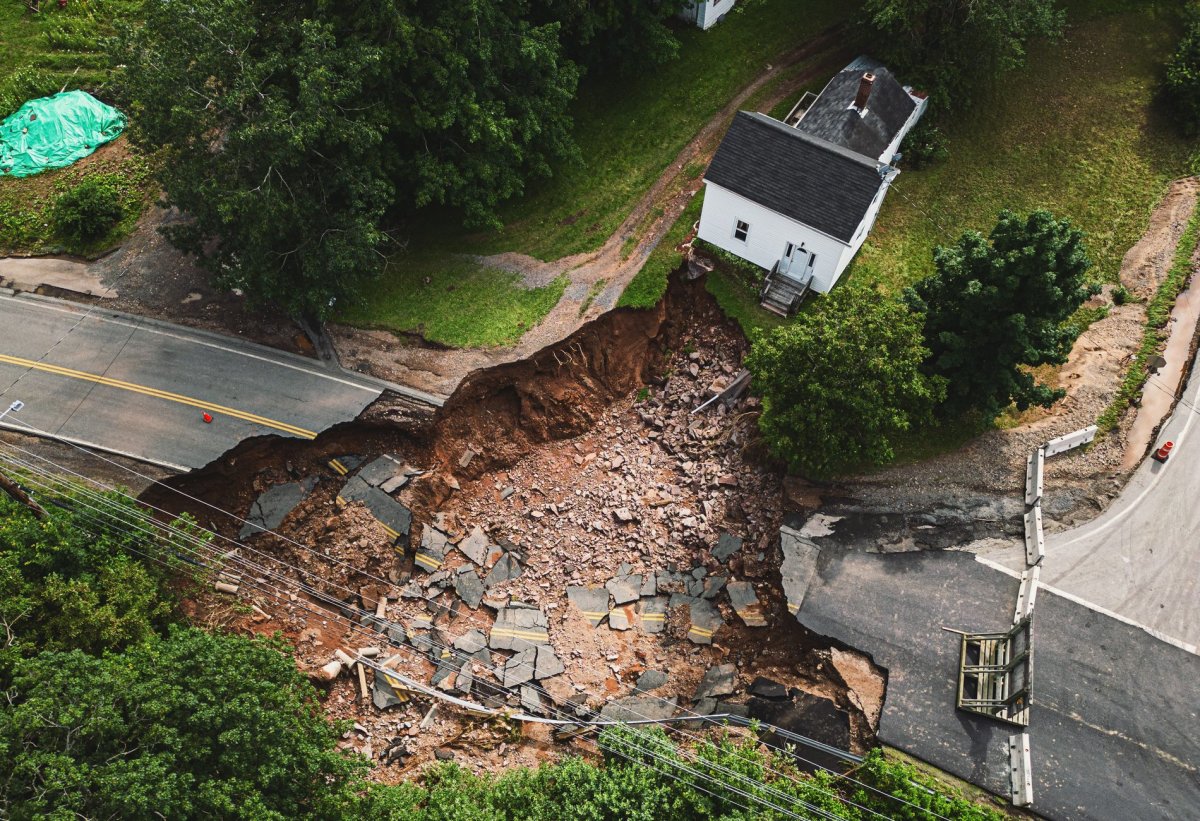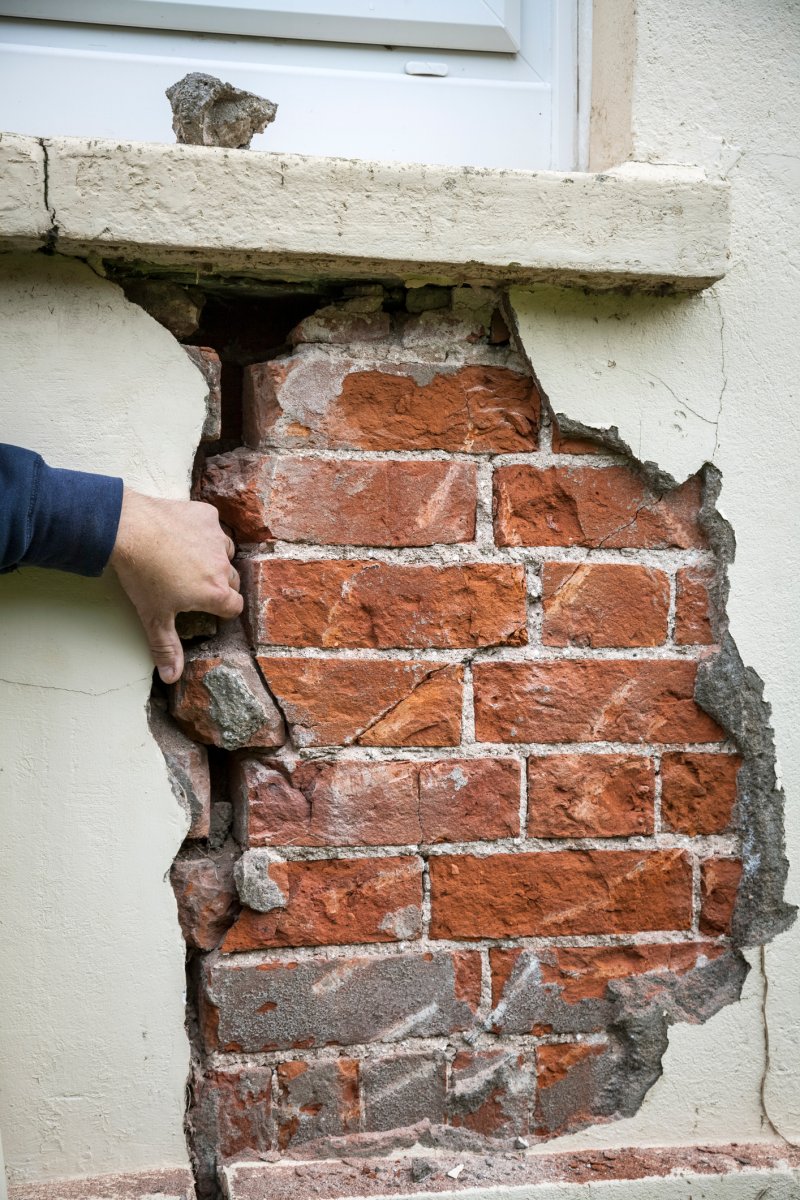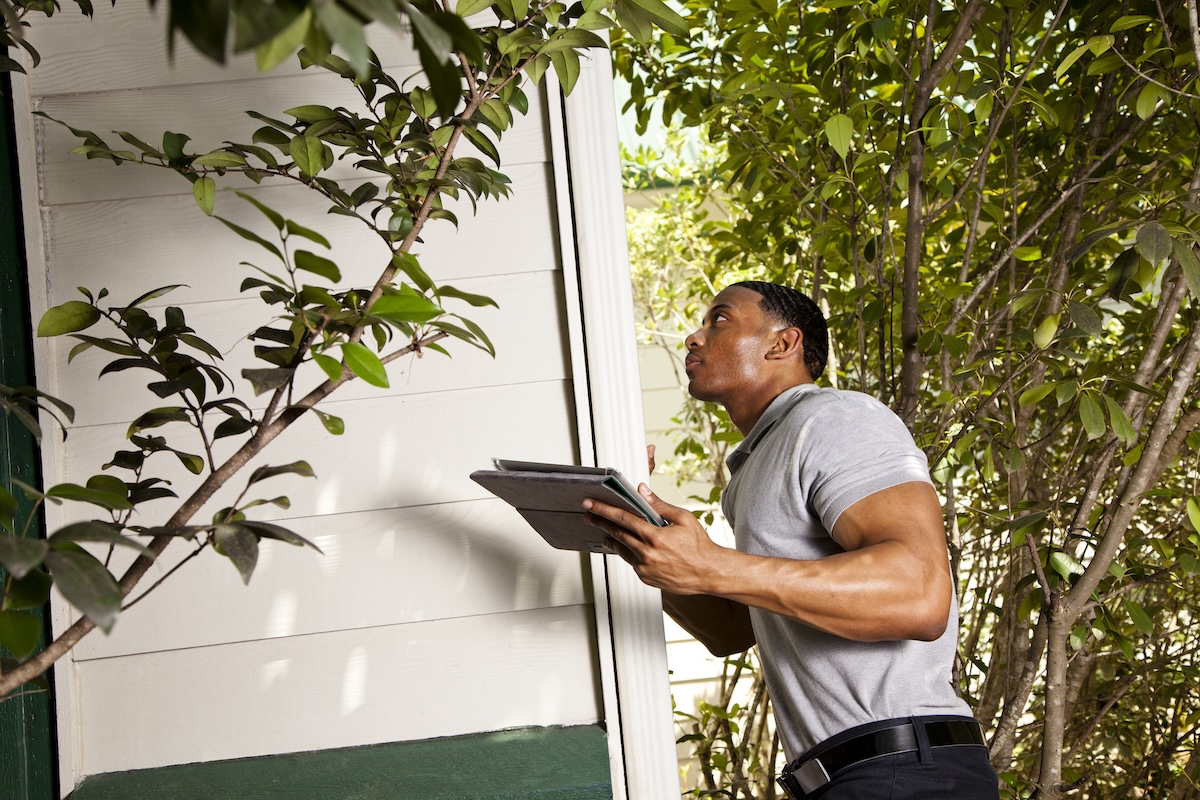

We may earn revenue from the products available on this page and participate in affiliate programs. Learn More ›
Although you might not notice it, your house could be slowly sinking. Scientists are reporting that the land below several U.S. cities is dropping, particularly in areas along the East Coast and Gulf Coast. Houston, New Orleans, New York City, Miami, and San Francisco are currently some of the most vulnerable locations. Scientists are especially concerned about homes sinking so close to the coast since they are also at higher risk for flooding as sea levels rise due to climate change.
This phenomenon is referred to as land subsidence, which occurs when the ground underneath a building weakens, causing the foundation to sink. It is different from normal building settlement, which is the downward movement as a result of soil being compressed by the weight of the home. Subsidence can affect the integrity of a home and cause significant structural damage, decreasing its value by 6 to 8 percent and putting residents in danger if not addressed properly.
Discover what triggers subsidence, signs that your home is sinking, and what you can do to protect your home from damage and costly repairs.
Main Causes of Land Subsidence
Land subsidence can occur due to both naturally occurring events and human activities. Here are some of the most common reasons a home starts to sink.
Groundwater extraction: When water is removed from the ground for drinking and other purposes, it lowers the water table that would otherwise hold up the soil. This is one of the most common causes of land subsidence.
Dry soil: When the ground loses moisture during hot, dry weather, soil can shrink, crack, and shift, leading to subsidence. Clay soil is especially susceptible to subsidence.
Trees: Large tree species like oak and conifers absorb a great deal of moisture through their roots. Those planted too close to a home can take water away from the soil sitting under the home’s foundation, which can cause the structure to sink.
Mining: Homes built near mining activity or close to a former quarry or pit can also experience subsidence.
Pipe leaks: Drainage issues due to problematic pipes or drains can also trigger subsidence. Wet soil softens and weakens, causing the home to lose structural support.
Heavy construction: Construction close to a home can also cause it to sink.
Earthquakes and glaciers: Natural events, such as tectonic shifts and retreating glaciers, can also contribute to some land subsidence over time.
Signs Your House Is Subsiding
The number one giveaway that your home might be subsiding is the appearance of thick, large cracks in walls or ceilings. Subsidence cracks tend to be wider than 3 millimeters (mm), wider at the top than at the base, diagonally shaped, and usually appear close to or around doorways and windows. You will notice cracks both on the outside and inside of your home. Expansion of existing cracks can also be an indicator.
However, not all cracks mean your house is sinking. They could just be an indication that walls or ceilings of your home are swelling and shrinking over time due to temperature changes. Also, a new home built with plastering can develop cracks as the plaster dries out and the structure settles.

Additional red flags to watch out for that might indicate subsidence include:
- Uneven or sloping floors
- Gaps near baseboards or between the frames of doors and windows
- Cracks on brickwork
- Doors or windows that stick
- Wallpaper that is shrinking, crinkling, or peeling at the wall or ceiling joints.
Ways to Protect Your Home From Sinking Land
While some subsidence occurs naturally and is hard to avoid, there are certain steps you can take to minimize the risk of serious damage. Take action quickly if you notice cracks or any of the signs highlighted above. It is better to be safe than sorry by hiring a professional to evaluate any new cracks in the wall, for example.
Maintain all external drainage on the property by regularly cleaning gutters and checking that there are no leaks or blockages in any pipes or drains. If you are considering planting new trees, ask a pro about the tree’s root system and make sure to plant them far enough away from the house to prevent roots from impacting the foundation.
If you have well-established bushes and shrubs planted near your home, avoid removing them, since that could disrupt the root system and lead to unstable soil. Finally, if you add an extension onto your home, choose a reputable contractor who knows how to protect the foundation to ensure the construction doesn’t cause subsidence.

Solutions to Fix the Problem.
Fortunately, once the source of a subsidence problem is identified following a thorough assessment conducted by a licensed structural engineer, the right solution can remedy the situation. Here are the most common ways to address subsidence:
Tree maintenance or removal: For sinking due to a specific tree, hire an arborist or tree surgeon to determine whether it needs to be removed. Installing root barriers is another option; they can serve as an underground wall to help prevent tree roots from damaging the foundation. Finally, heavy and continued pruning of a tree can reduce its size.
Repairing leaking or burst pipes: A pro can identify which pipe is the culprit by conducting a drain survey. Once the leak is located, the drain can be repaired or replaced, if necessary.
Underpinning: As the most invasive, time-consuming, and expensive option, underpinning involves excavating sections beneath the foundation and then filling them with concrete to stabilize the home.
Resin injections: As a less invasive and quicker option compared to underpinning, resin injections involve drilling small holes in and around the affected area. Then liquid resin is injected into the holes, which ultimately expands and forms a solid substance. The hard resin compacts the soil and fills any voids, enhancing the strength of the ground to help raise and support a foundation that had previously subsided.
The cost of these solutions will vary depending on factors like location, severity of the problem, and the type of solution required. Contact your insurance provider early in the process to find out if any of the subsidence-related repairs will be covered and if they have guidelines regarding which contractors to hire.
Finally, remember to be patient during this process. Fixing sinking land can be a cumbersome endeavor that takes a long time. While the actual work may take a few days to several weeks, the entire process—from contacting an insurance provider, to having an engineer submit a report, to getting quotes from multiple contractors—can take months or even a year or more.
